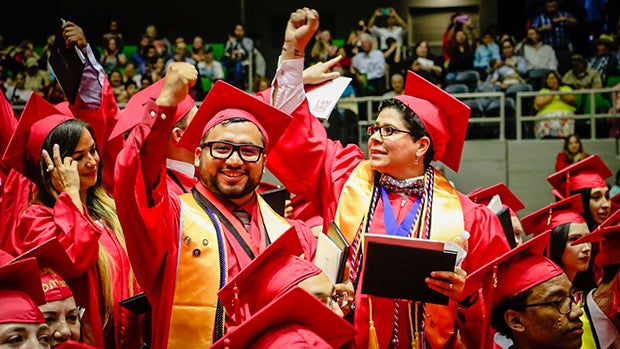Joshua Wyner is founder and executive director of the Aspen Institute College Excellence Program.
Editor’s Note: This piece originally appeared on The Huffington Post.
Now that the Supreme Court has ruled that states can ban racial preferences in admissions to public colleges and universities, it’s possible that the days of affirmative action are numbered. In states that ban race-based admissions, selective colleges can still recruit and accept more low-income students as a way to expand economic opportunity and provide all students rich educational experiences. But that strategy will not ensure racial and ethnic diversity.
Colleges and universities serious about that goal need a new strategy. One thing that can be done? If selective colleges train their eye on students transferring from community colleges, rather than solely on high school seniors, they’re sure to build a student body that’s both racially and socioeconomically diverse.
Today, community colleges enroll 7 million degree-seeking students — more than 40 percent of US undergraduates. Community college freshmen are much more likely than selective four-year college freshmen to be students of color. Indeed, half of all Hispanic-Americans — the fastest growing segment of the US population —who enroll as undergraduates start at a community college.
Eighty percent of community college students report wanting a bachelor’s degree when they enter, but only 15 percent attain one within six years. That so many millions of them fail to reach their educational goals is a tragedy not just for those students but for the country, which can’t afford to squander so much potential.
In 2006, former University of Arizona professor John Cheslock and former University of Massachusetts Boston professor Alicia Dowd found that only 4 percent of students in the most selective public colleges and universities began their education in community college. Why such low rates of transfer? For too long, the unspoken assumption was that two-year students were unable to succeed in the selective four-year college environment. But data tell a different story. For example, in the California university system — a national leader in community college transfers to highly selective universities, such as UC-Berkeley and UCLA — students who began at a two-year school graduate at the same rate as students who began as university freshman.
The success of community college transfers in California, mirrored at a smaller scale in other selective colleges nationally, may come as a surprise — but it shouldn’t. After all, what college and university admissions officers are trying to assess among high school seniors is how well they are likely to do in college. While SAT/ACT scores and high school transcripts provide important hints, how well students actually do in their first and second years at an institute of higher education would seem to be a much more relevant indicator.
That is what the University of Central Florida (UCF) in Orlando found out after it decided to partner with Valencia College, a community college nearby. Anyone who graduates with an associate’s degree from Valencia or two other state community colleges is guaranteed admission to UCF. The 10,000 Valencia graduates who enroll at UCF are twice as likely as others at UCF to be students of color — and they do just as well as students who started at UCF as freshman.
Taking community college transfers has other significant benefits to public colleges and universities. Community college students are, on average, older than four-year students at selective colleges, which infuses diversity of a different sort into classrooms. Because these students typically arrive with two years of credit under their belts, they may require less aggregate financial aid. And, many middle- and low-income students and families who might be scared away by rapidly escalating four-year college and university prices will be attracted by the prospect of paying only two years of higher tuition along with two years of much lower community college tuition.
It takes time and commitment to build strong partnerships between community colleges and four-year schools. Aligning academic expectations and administrative systems to ensure smooth student transitions requires strong leadership from presidents, engagement among faculty, and planning from institutional staff.
But our nation’s selective four-year colleges and universities don’t have too much time. In the wake of the Supreme Court’s latest decision, there are surely advocates and policy makers in every state who are considering how to ban affirmative action. Institutions may or may not advance diversity by contesting those efforts. It’s a far surer bet to roll out the welcome mat for the ready-made, growing population of diverse, committed, and already successful learners who started their higher education in community college.
Joshua Wyner is founder and executive director of the Aspen Institute College Excellence Program and author of “What Excellent Community Colleges Do: Preparing All Students for Success” (February 2014, Harvard Ed. Press).


